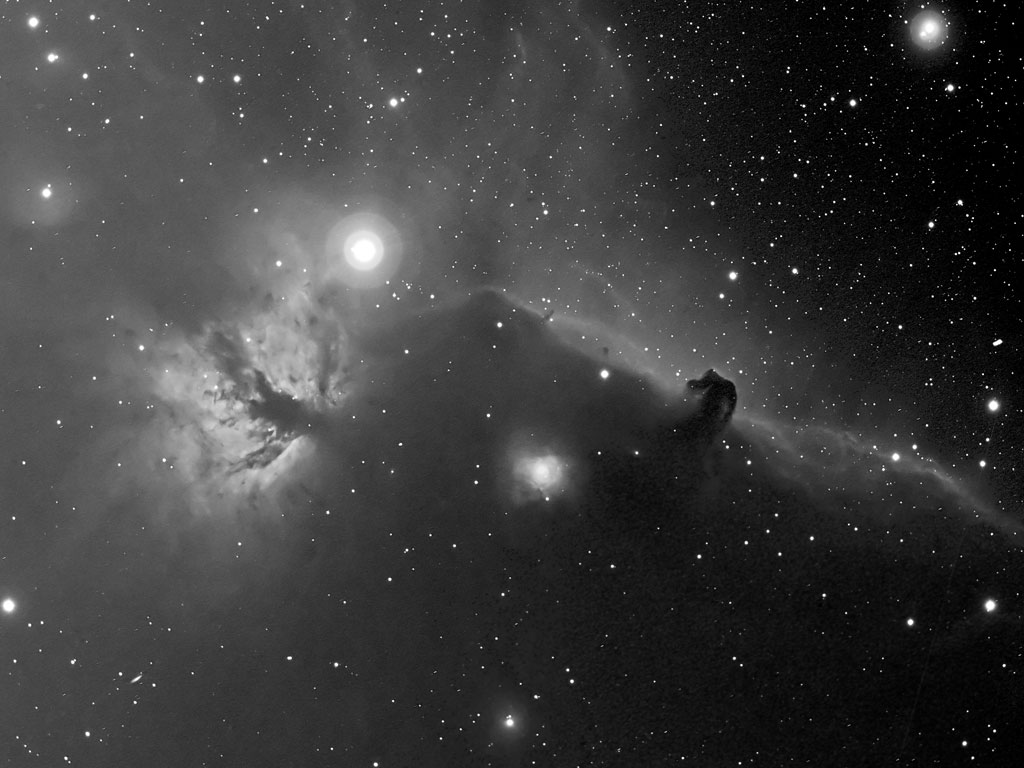My God, it’s full of stars—Dave Bowman.
December 16, 2009: the close-up photos of NGC 2359 that are often seen do a beautiful job of revealing the delicate whorls and filaments of the nebula, but they frequently fail to portray the incredibly rich starfield in which the nebula lies, so I chose to take the wide view with a Takahashi FSQ-106ED Astrograph. The field here is about 2.4 X 1.6 degrees. The camera was a Canon 40D, as my SBIG STL-11000M is away being repaired. Captured with Canon’s camera-control software. Processed in Nebulosity, Pixinsight, and Photoshop CS3 Extended. Mount control was done with TheSkyX Serious Astronomer Edition and guiding of the 12 five-minute exposures was via a Starfish guide camera. There is a larger version here. The larger version will open in a new window; re-size your browser window as needed to enlarge it up to its maximum of 2048 X 1401 pixels. All-Mac image. |
